I2AO Part 1: Astronomy Basics
Back to the Index of I2AO (Introduction to Astronomy Online)
| Next |
PART 1: ASTRONOMY BASICS by Lesa Moore
- What is Astronomy?
- What do astronomers study?
- How do we see these objects?
- Where are the telescopes?
- When is the best time to look?
- Star or planet?
- What is a star?
- What is a planet?
- Planets of the Solar System
- Moons of the Solar System
- Other things in the Solar System
- Colours of Stars
- Examples of Deep Sky Objects
------------------------------
The name "astronomy" derives from astrum (star) and nomen (name). In ancient times, astronomers named and mapped the stars. The modern science of astronomy investigates what things are made from, how they work, and why they look the way they do. Astronomers try to understand what it is they see in the sky. Astronomers are scientists.
A non-astronomer thinks of an object as something solid, perhaps something that they can hold in their hand. Astronomers study "objects" in the sky or space, also known as celestial objects. Some of these are solid, some are made from gas and some are collections of objects or regions that are bound together by gravity. Types of objects include:
- stars
- planets
- smaller objects in the Solar System (refer Section 11 below)
- star clusters (open clusters and globular clusters)
- nebulae (nebula means cloud, so nebulae are clouds of gas and/or dust that may glow with diffuse light or may obscure light from stars behind them)
- galaxies (vast collections of stars, usually with gas and dust as well)
- and more (e.g. black holes, quasars) ... to be covered in later online modules.
3. How do we see these objects?
- Amateur astronomers begin with the naked eye.
- Telescopes or binoculars magnify images, gather more light and have better resolution (i.e. make things look clearer) than the naked eye. There is a great range of telescopes available to amateurs these days.
- There are many classes of large professional optical telescopes. In the 70s, they were around 4 metres in diameter. In the 90s, they were being built around 8 to 10 metres in diameter. In the 21st century, 20- to 30-metre class telescopes are being constructed.
- Historically, images were recorded on film. Nowadays, CCD chips or thin-film transistor technology is used, similar to what you use for taking photos with your mobile phone.
- Professionals also study spectra (where you break the light up into the colours of the rainbow) of celestial objects and observe in many wavelengths (not just visible light that we see with our eyes), such as radio, infrared and x-rays.
- Because our atmosphere blurs our images of celestial objects, high places are better for optical telescopes.
- Optical telescopes are generally located on mountaintops. Here are some examples.
Figure 1 below: This is the summit of Mauna Kea, on Hawai'i (the Big Island of the Hawai'ian Islands).
From left to right: 24" (very small dome on left), University of Hawaii 88", Gemini 8-meter, Canada-France Hawaii Telescope (CFHT), James Clerk Maxwell Telescope (dimly lit in shadow behind CFHT), NASA Infrared Telescope Facility (silver dome in front of twin Keck domes), Keck I&II (large twin white domes), Subaru (silver structure in Keck I shadow).
Photo Credit: Copyright 1999, Neelon Crawford - Polar Fine Arts, courtesy of Gemini Observatory and National Science Foundation

Figure 2 below: This exterior view of Mauna Kea highlights the Gemini North Observatory which is the largest dome near the center of the image. This image was taken shortly after a significant snowfall in early 1999 before skiers hit the slopes! The 360-degree panoramic image is made from 18 images stitched together using Apple QuickTimeVR technology. This image is part of a QuickTimeVR series that can be accessed on the www at: www.gemini.edu/public/movie.html. This image is from a complete CD-ROM/WWW virtual tour of Gemini.
Photo Credit: Courtesy Gemini Observatory

Figure 3 below: The Very Large Telescope (VLT) comprising four 8-metre mirrors in separate enclosures. This one is located in Chile.
Photo Credit: Courtesy Ángel Rafael López-Sánchez

Space is even better, e.g. the Hubble Space Telescope orbits the Earth.
For amateurs, a dark back yard or open field away from city lights is suitable.
5. When is the best time to look?
- For night sky observing, astronomical twilight ends about an hour and a half after sunset (this is latitude-dependent).
- Some objects are only observable at certain times of night (e.g. Mercury and Venus are always near the Sun so may only be observed shortly after sunset or before sunrise).
- Some objects are only visible at certain times of year because the constellation must be in the night sky, not near the Sun. Here are two examples:
Figure 4 below: Orion, a constellation that is visible in Australia on summer evenings, appears on the left-hand-side of this image, to the right of the tree. The star pattern (asterism) known as the "saucepan" is part of this constellation. Stars in this image look like little streaks because the image was made using an exposure of five minutes or so, in which time the Earth has spun a little on its axis, making the stars appear to move during the exposure. This effect is known as star trailing.
Photo Credit: Lesa Moore
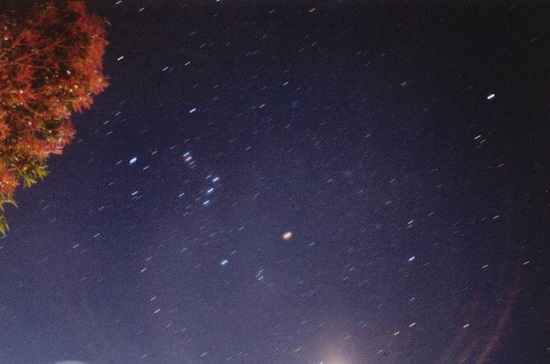
Figure 5 below: Scorpius, a constellation that is easily seen in the wintertime from Australia, lies above the clothesline in this image. Jupiter is also visible in the lower left of the photo, below the "head" of the scorpion.
Photo Credit: Lesa Moore

- Some objects are only visible once in a lifetime (some comets).
- The Sun may only be observed in the daytime!
- Stars produce their own energy by nuclear fusion, planets shine by reflected light.
- Stars usually twinkle, planets don’t.
- In our Solar System, planets and other bodies orbit one star – the Sun.
- Thousands of extra-solar planets are known, orbiting other stars.
- A star is a big, hot ball of gas.
- As Carl Sagan said, the Sun is a star, just like any other star, but we see it close-up.
- The Sun is made mostly from hydrogen and helium, with traces of all the other elements that we have here on Earth (oxygen, nitrogen, silicon, carbon, sodium, etc.).
Figure 6 below: This photograph of the Sun, taken on December 19, 1973, during the third and final manned Skylab mission, shows one of the most spectacular prominences ever recorded, spanning more than 588,000 kilometres (365,000 miles) across the solar surface. The loop prominence gives the distinct impression of a twisted sheet of gas in the process of unwinding itself. In this photograph the solar poles are distinguished by a relative absence of supergranulation network, and a much darker tone than the central portions of the disk. Several active regions are seen on the eastern side of the disk. The photograph was taken in the light of ionized helium by the extreme ultraviolet spectroheliograph instrument of the U.S. Naval Research Laboratory. (Wikipedia Caption)
Image Credit: NASA
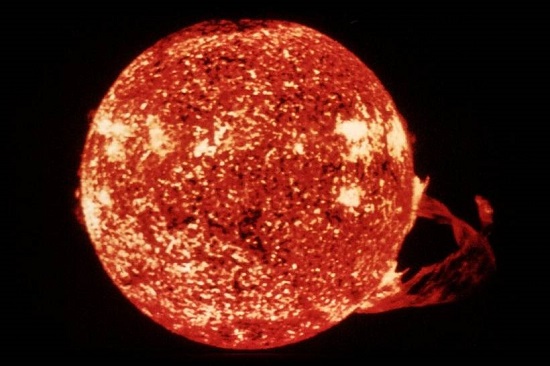
- By the definition that astronomers arrived at during the 2006 General Assembly of the International Astronomical Union, a planet of the Solar System is:
A celestial body that:
(a) is in orbit around the Sun,
(b) has sufficient mass for its self-gravity to overcome rigid body forces so that it assumes a hydrostatic equilibrium (nearly round) shape, and
(c) has cleared the neighbourhood around its orbit.
- When this definition was implemented, Pluto no longer qualified as a planet, based on condition (c), so was reclassified as a dwarf planet.
9. Planets of the Solar System
- The Solar System has eight known planets - Mercury, Venus, Earth, Mars, Jupiter, Saturn, Uranus and Neptune
- Remember these using the mnemonic, My Very Elderly Mother Just Sat Under Neptune.
- Pluto is the largest of the dwarf planets, a class that also includes:
- Ceres (the largest main belt asteroid); and
- Eris, Sedna, Makemake and Haumea (which orbit farther from the Sun than Pluto does).
Figure 7 below: The illustration below shows the sizes of the Sun, planets and dwarf planets approximately to scale. Separations/distances are not to scale, but the order is correct, based on the average distance of each body from the Sun. Note that orbits are elliptical and, at certain times, Pluto orbits closer to the Sun than does Neptune.
Image credit: NASA
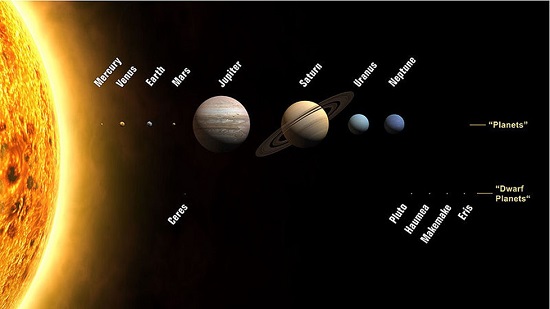
Figure 8 below: Orbits of the "gas giant" planets, Jupiter, Saturn, Uranus and Neptune, and the dwarf planets, Pluto and Eris. The Kuiper belt is a region where distant asteroids and dwarf planets orbit.
Image credit: NASA

- The Earth has one moon, known as "the Moon".
- Other planets of our solar system have moons too. Only Mercury and Venus are without moons. Jupiter and Saturn each has more than sixty moons! As astronomers and NASA probes continue to find more, it is necessary to check the NASA website for a complete list of all currently known moons of the outer planets.
- The dwarf planet, Pluto, has five known moons (as at January 2018).
- One of the main belt asteroids, Ida, has a small moon that is just one kilometre in diameter. Its name is Dactyl.
Figure 9 below: The Moon. This composite image was created by putting a first-quarter Moon photo and a third-quarter Moon photo together. Because the Sun's rays are at a lower angle on both halves, the topography of the Moon's surface is much clearer. This sort of composite makes the lunar features near the central meridian stand out in greater detail.
Image credit: Lick Observatory
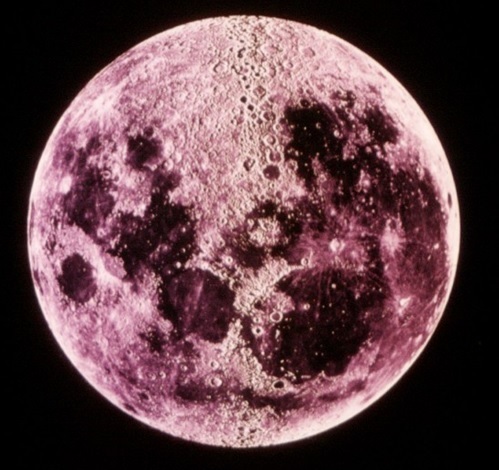
Figure 10 below: Composite image of Jupiter and its four brightest and largest moons. Jupiter is in the background, with the Great Red Spot visible on the lower half of the planet. The moons are Io to the left of Jupiter, Europa in front of the planet, Ganymede seen in full at the bottom of the image and Callisto in the foreground at bottom right.
Image credit: NASA
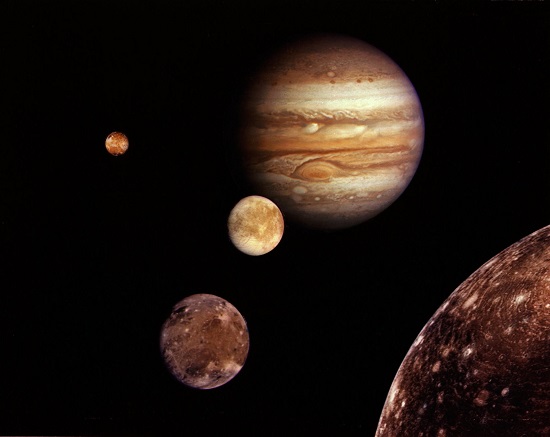
11. Other things in the Solar System
- The Solar System contains not just planets and moons, but asteroids, comets and meteoroids.
Asteroids may be found in many locations in the Solar System.
- "Asteroid" means "star-like".
- The main asteroid belt is between the orbits of Mars and Jupiter.
- The Trojan asteroids orbit the Sun at the about same distance as Jupiter, but precede or follow Jupiter. In fact, six planets have "Trojan" asteroids but, by far, most of them are Jupiter Trojans. They are subdivided into two main groups - the Trojans (behind the planet) and the Greeks (ahead of the planet). The Hildas orbit opposite Jupiter, somewhat closer to the main asteroid belt.
- Outer asteroids inhabit the Kuiper Belt. Some of these have orbits that cross the orbit of Neptune, so are termed Trans-Neptunian Objects (TNOs).
Figure 11 below: The asteroids of the inner Solar System. Main-belt asteroids are shown in white. The blue rings are planetary orbits. The Trojans, Greeks and Hildas are labelled in the diagram.
Image Credit: Wikipedia (public domain)
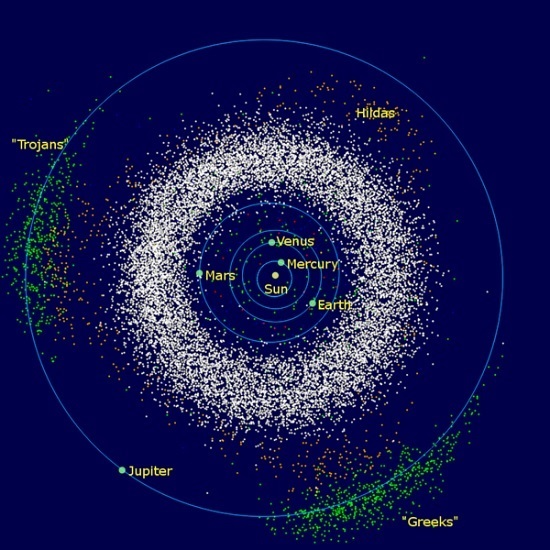
- An asteroid appears like a point of light in a telescope.
- Over time, the asteroid will move with respect to the background stars.
- In an image that is made by tracking the stars, an asteroid will appear as a small streak.
Figure 12 below: Asteroid trail on a star image. The telescope tracks the stars, which appear as points of light. The asteroid moves with respect to the background stars so, on a long exposure (30 seconds in this example), it makes a trail of light on the detector.
Image Credit: Buzzi & Luppi, Schiaparelli Astronomical Observatory

Comets orbit the Sun with periods that range from less than 100 years (short-period comets) to thousands of years (long-period comets).
- "Comet" means "hairy one", and refers to the appearance of a comet with a tail.
- Comets are small, typically 10 to 40 km in diameter.
- They are made from dust and ices and are sometimes described as "dirty snowballs".
- When far from the Sun, they are dormant.
- When close to the Sun, the ices begin to vaporise forming a temporary atmosphere known as the coma of the comet.
- The coma (dust and gas) is driven back by the solar wind (radiation and charged particles given off by the Sun) to form the tail of the comet.
- It is often said that "The tail always points away from the Sun". However, the tail of a particularly close, bright comet, especially one that involves a lot of dust, may appear much more complex. Dust tails are generally more curved, a combination of the pressure of the solar wind and the physical path of the comet through space.
Figure 13 below: Comet McNaught, observed in 2007, had a complex tail. The dust tail, visible in this photo, was curved due to the combined actions of the pressure of the solar wind and the motion of the comet. The comet was heading down and to the left, as seen by the star trailing of the comet's coma (the short, bright streak at the bottom of the tail). The multiple streamers in the tail were caused by successive outburts of dusty material from the comet.
Photo Credit: Lesa Moore

Meteroids, Meteors and Meteorites
Meteoroids are particles that orbit the Sun, chucks of rock and broken-up asteroids that are generally small and have not yet been swept up by the planets and other large bodies. Some enter Earth's atmosphere and burn up as meteors. Meteors are seen as rapid, visible streaks of light in the night sky, the light being caused by excitation of the atmosphere as the object falls through it. Very large meteors may also leave persistent and, sometimes, smoky, trails. Meteors are also referred to as "falling stars", even though they are not stars. Larger meteoroids that don't burn up, but make it through to the ground to land as rocks, are called meteorites.
- Stars appear different colours, even to the naked eye.
- The colour of a star indicates its surface temperature.
- Starlight includes visible light (all the colours of the rainbow) plus light that our eyes can't see (infrared, ultraviolet, and so on).
- Surface temperature can be determined from a measurement of the peak wavelength of the light given off by the star.
- Very hot stars are bluish, stars like the Sun have the peak of the spectrum in the green, and cool stars are termed "red". To the naked eye, it is a little difficult to distinguish a blue star. However, a couple of red supergiants are well known: Antares in Scorpius and Betelgeuse in Orion appear reddish, or orangey to the naked eye.
Figure 14 below: A diagram showing blackbody radiation curves (the amount of light given off at each colour of the spectrum) for a hot blue star (15000 kelvins surface temperature), a Sun-like star (6000 K) and a cool red star (3000 K). For the blue star, more blue light is emitted than red (i.e. the curve is higher on the blue side of the colours), so the star looks blue. It is the reverse for the red star. A 6000 degree star (e.g. the Sun) looks white because roughly equal amounts of all colours are given off and they blend together to produce white light. The fourth curve (the small black one in the diagram) is that of a human, who emits most energy in the infrared (non-visible) part of the spectrum, i.e. humans radiate heat, not light.
Image Credit: Diagram by Lesa Moore
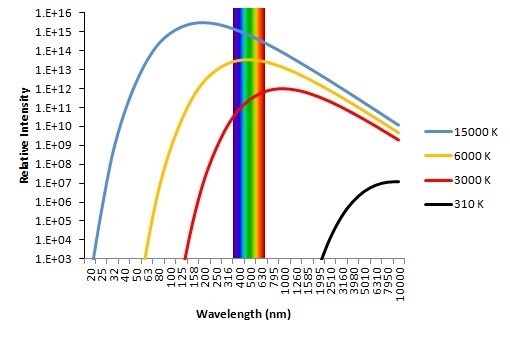
- If you look at photos of stars, the colours are more obvious. If the image is out of focus, the colours spread out making them even easier to see.
Figure 15 below: This is a progressively defocused image of the constellation, Orion. The red supergiant, Betelgeuse, appears yellow at the top, left. The three bright stars in a row across the middle are classed as hot blue stars. The pinkish region in the bottom half, left of centre, is emission from hydrogen gas in a nebula (produced by a different mechanism entirely, and not blackbody radiation).
Image Credit: David Malin
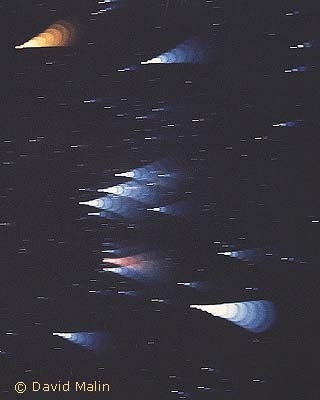
- Whilst astronomers refer to the peak colour in the spectrum, lighting experts use the term "colour temperature" which is a better indication of how the star will appear to the naked eye, i.e. "red" stars tend to look pastel orange to yellowish.
Figure 16 below: A colour temperature chart. Note that the colours are more pastel than in Figure 13. A "red" star would really look more of a pastel orange or yellow, as in Figure 14, rather than a true red.
Image Credit: Wikipedia (public domain). Original caption: CIE xy 1931 chromaticity diagram including the Planckian Locus. The Planckian locus is the path that a black body color will take through the diagram as the black body temperature changes. Lines crossing the locus indicate lines of constant correlated color temperature. Monochromatic wavelengths are shown in blue in units of nanometers.
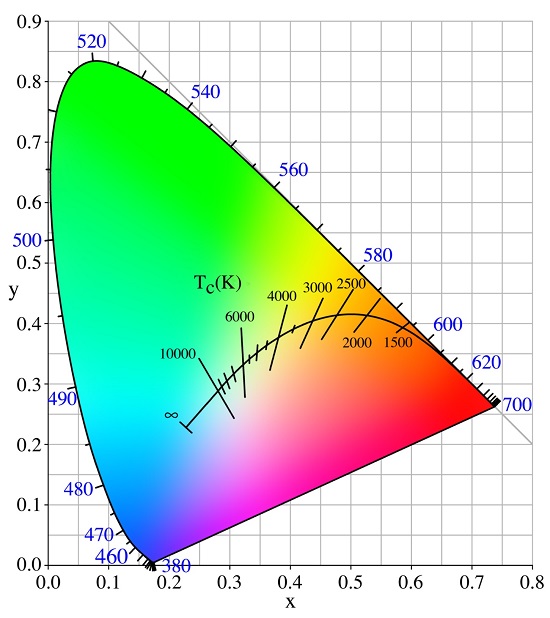
13. Examples of Deep Sky Objects
- "Deep sky" objects are those beyond our own Solar System (i.e. beyond the gravitational bounds of our Sun).
- They include various-sized aggregations of stars as well as gas and dust clouds.
- Stellar groups:
- Open clusters
- Globular clusters
- Spiral galaxies
- Elliptical galaxies
- Irregular galaxies
- Nebulae (gas and/or dust clouds):
- Emission nebulae
- Reflection nebulae
- Planetary nebulae
- Dark nebulae
The following images show examples of these objects.
Figure 17 below: An open cluster, the Jewel Box. Stars in an open cluster all form from the same cloud of gas and dust. There may be a handful up to a couple of hundred stars in an open cluster. The stars are loosely held by gravity and may drift apart from each other over time.
Image Credit: European Southern Observatory
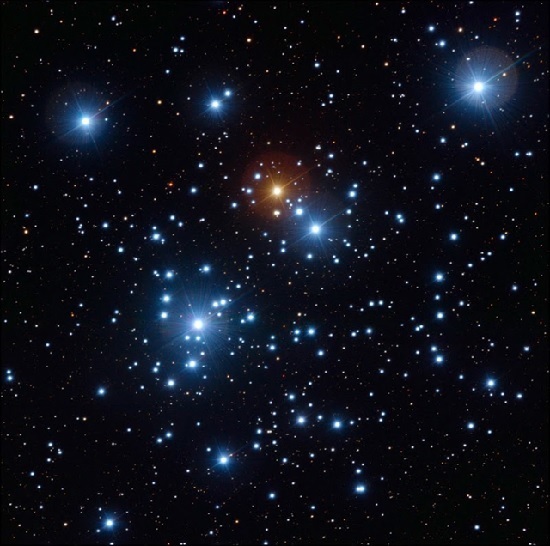
Figure 18 below: A globular cluster, Omega Centauri. Globular clusters contain thousands up to, perhaps, a million stars that are tightly gravitationally bound together.
Image Credit: Australian Astronomical Observatory
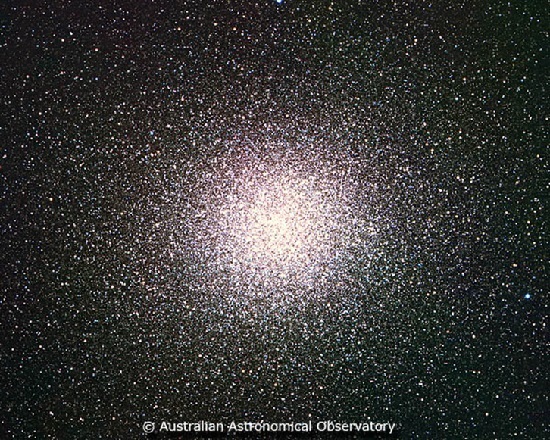
Figure 19 below: A spiral galaxy, M74. Galaxies like this may contain a couple of hundred billion stars.
Image Credit: Ángel Rafael López-Sánchez

Figure 20 below: An elliptical galaxy, M87. Elliptical galaxies range greatly in size. M87 is a large elliptical galaxy in the Virgo Cluster.
Image Credit: Canada-France-Hawaii Telescope, J.-C. Cuillandre (CFHT), Coelum
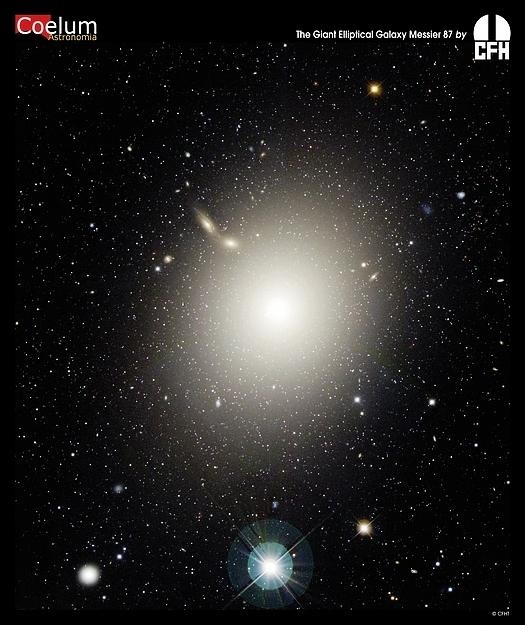
Figure 21 below: An irregular galaxy, the Large Magellanic Cloud. Irregular galaxies do not show features like the arms of a spiral galaxy, nor the football-shape of an ellliptical galaxy. Irregulars are small-sized galaxies.
Image Credit: Australian Astronomical Observatory. Original caption: The Large Magellanic Cloud (LMC) is the nearest galaxy to the Milky Way but less than one tenth as massive; even so it contains the equivalent of over ten billion solar masses of material in the form of stars, gas and dust. The LMC is at a distance of 170,000 light years and is visible to the unaided eye from southern latitudes, with an apperance rather like a detached piece of the Milky Way, in the otherwise barren constellation of Dorado.

Figure 22 below: An emission nebula, the Tarantula Nebula in the Large Magellanic Cloud. Stars form in this type of nebula, which is emitting light from hydrogen gas that is excited by hot, young stars. An emission nebula is a stellar nursery.
Image Credit: Joe Cauchi (ASNSW)

Figure 23 below: A reflection nebula, the Trifid Nebula (M20). This nebula is, in fact, two types of nebulae in the one object. On the right, the characteristic pinkish looking region is an emission nebula. On the left, the blue region is reflection nebulosity. A reflection nebula shines simply by light reflecting off dust in space.
Image Credit: Kevin Cooper (ASNSW)
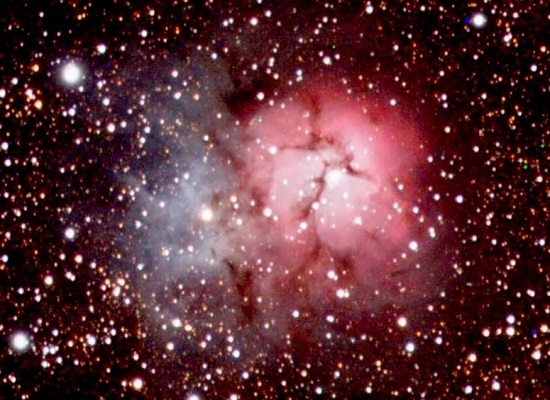
Figure 24 below: A planetary nebula, Abell 70. A planetary nebula is the left-over expanded atmosphere of a star like the Sun that has reached the end of its life. The star, after exhausting its fuel, collapses to become a white dwarf (about the size of the Earth). In this case, the white dwarf is clearly seen at the centre of the planetary nebula.
Image Credit: Brent Miszalski (South Africa Large Telescope).
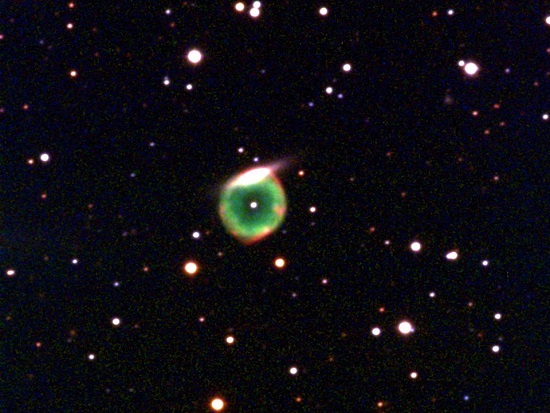
Figure 25 below: A dark nebula, the Horsehead Nebula. Dark nebulae are patches of dust in space that absorb the light from bright objects behind them. A dark nebula will appear dark against a bright stellar background or, as in this case, an emission nebula.
Image Credit: Trevor Gerdes (ASNSW)
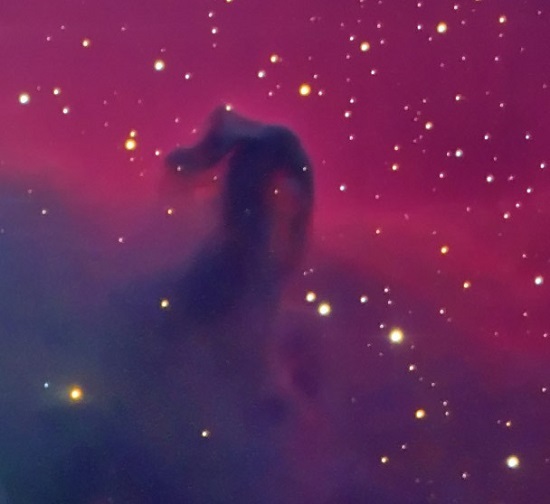
| Next |
Author: Lesa Moore, 26th July 2017. Minor revisions 28th January 2018.

